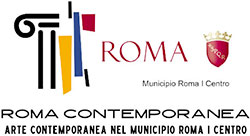Curated by Daina Maja TitonelEssay by Marco Di Capua
MAC Maja Arte Contemporanea is delighted to host the first solo exhibition by sculptor Angela Maria Piga; on this occasion, she offers her audience a selection of sculpted ceramics, created in 2017-'18 and displayed here for the very first time.
Born in Rome in 1968, Angela Maria Piga comes to sculpture after a life dedicated to writing and curating exhibits. She started her career by working in an art gallery, then went on to write about art and architecture. Having spent twenty years observing art created by others, she decided to venture into new territory and - in her own words - move "from observation to action," beginning her intense work with ceramic in 2017.
She says of her work: "If we can say that it is the narrative voice to generate imaginary forms in writing, then it follows that a form brings to life the narrative in sculpture. The order is flipped, but the outcome is analogous: both the written word and the carved form are bearers of worlds defined on their own terms. The worlds that emerge through my sculptures can be interpreted using a literary lens. They are Pirandellian Naked Masks; they echo the tragic-comedic paradoxes conceived by Gogol or a Kafkaesque estrangement. And yet - although they certainly do evoke the absurd and the paradoxes expressed in those worlds - they also exist in a confined dramatic space. Their bodies are shaped out of 'quasi'-subhuman matter; dumb and incomplete beings, they try to find their reconciliation with the literate and relational reality of the world."
The mouth is central to this work. "It is the creator; the tiny, concentrated Big Bang at the heart of each figurine," quips Marco Di Capua in the catalogue.
"Suddenly, a crack in the clay becomes a gesture, a mark morphs into a sign, a cut turns into a wound, and, further, causes a grimace, revealing an individual existence, much like the crack that is our mouth does. Often I start there," - the artist confesses - "the mouth is a medium for a creature that is craving the possibility to emit sounds and words. And just so, a persona emerges, most abruptly, stating a claim, and urging to break away from mere matter. I help him to do so quickly; I help him find his haven in matter and through matter."
Di Capua also states, "There is something gentle, something archaic, in these small figurines that open their mouths as a makeshift Chorus, and let out silent chants or soft voices, that are never in vain. Theirs is not a desperate cry - like the distorted mouth on Edvard Munch's bridge - nor does it resemble the cries that followed Munch's like a violent echo, such as Francis Bacon's caged papal faces. No, their cry recalls the mouth from Ernst Barlach's Singing Man. Its peacefulness, its firmness, and the subtle irony that springs from the inevitability of an action that is performed in spite of everything. Why do you sing? Because I do!"
Where have these beings emerged from? Their maker calls them in turn her "little people", her "army" or "the village".
They yield to "diverse interpretations of their origin. To [Di Capua], they seem to have emerged from a liquid world, and to bear its print. They remind me of hardened lava (recalling Leoncillo or an early Fontana) or small, pointy rocks; perhaps a coral reef (for their chromatic splendor as well as the biomorphic branching of the figurines, which call one to my mind) composed of tiny elements that are silent allies and thus blend together easily, as fragments of a potentially infinite, sculpted 'lover's discourse'."
The colors and titles are essential in qualifying each creature's personality, as Di Capua also underscores, "So here they are, remarkable characters, actors playing a part. They introduce themselves; they are: The Blue Rider, the Shaman, the Boxer, The Man Who Laughs (from Victor Hugo) a highly counter-Michelangelesque King David, The Tenant (from Roman Polanski's eponymous film) and a Pietà. Among them, we also find: the Accountant; the Judge; with reminiscences of Pirandello, but also of Gogol's Dead Souls and, further, of some mysterious, telluric Spoon River...
Their broken physicality charges them with melancholy, rendering their bodies more fragile, and enhancing their personality by contrast. In it, they find the desire to be observed by viewers. And so, not any less imaginatively than Alberto Savinio would have said: narrate your story, you (little, big) people."
SHORT BIOGRAPHY
Angela Maria Piga was born in Rome, in 1968. She lives in Rome.She graduated in French Literature at Rome University La Sapienza. From 1990 to 2006 she worked as an art gallerist in Rome, with a special focus on Polish and Hungarian contemporary art. In 1997 she played the main character in the theatre play Radia directed by Julio Solinas. In 2003 she published her first novel La Sindrome di Salomone ("Salomon's Syndrome"). From 2006 to 2009 she worked as writer and host of cultural radio programs for Rai International. Since 2009, she has been writing articles and essays on art and architecture for magazines and art catalogues. From 2015 to 2017 she lived in Düsseldorf, where she began her work as a sculptor.



